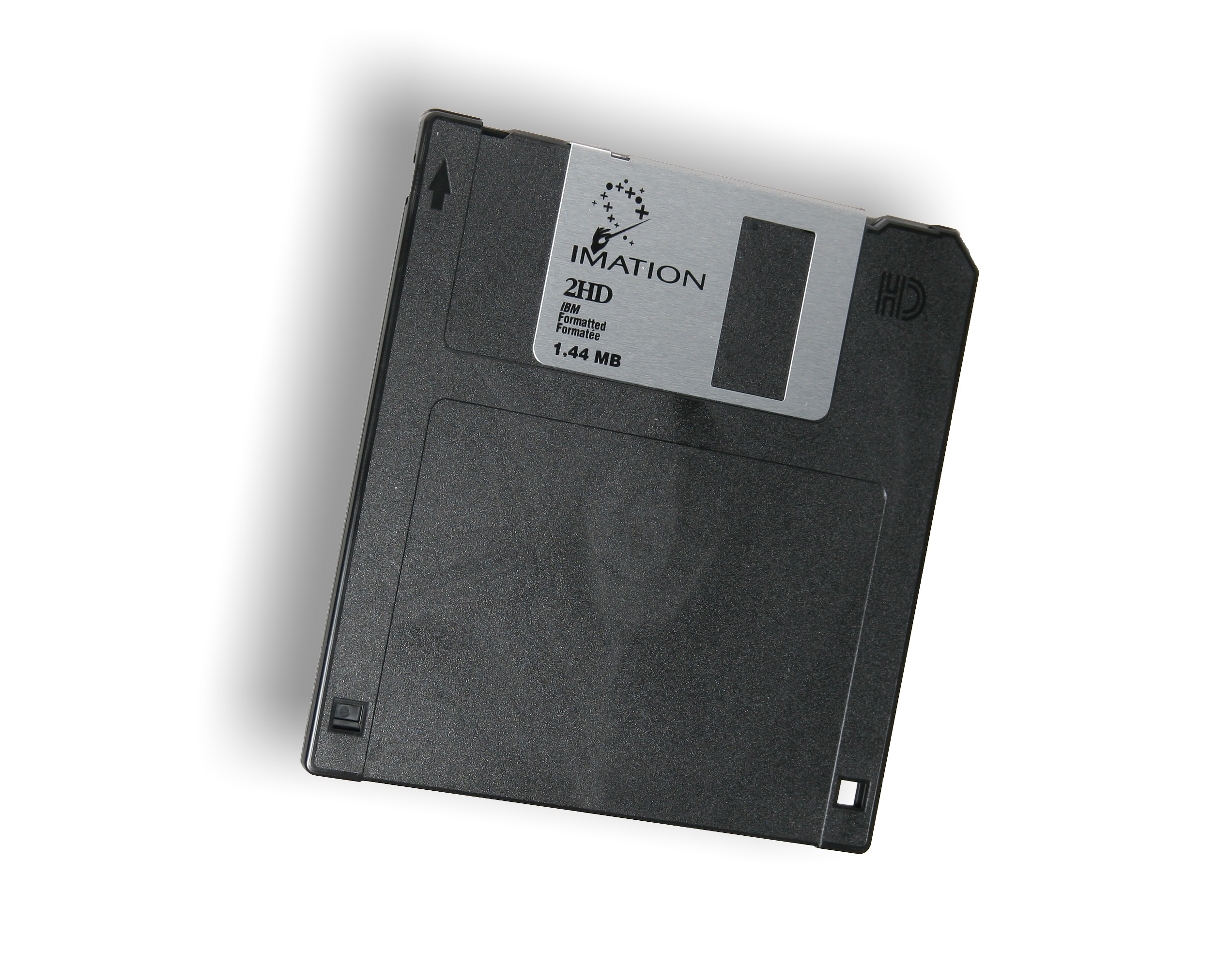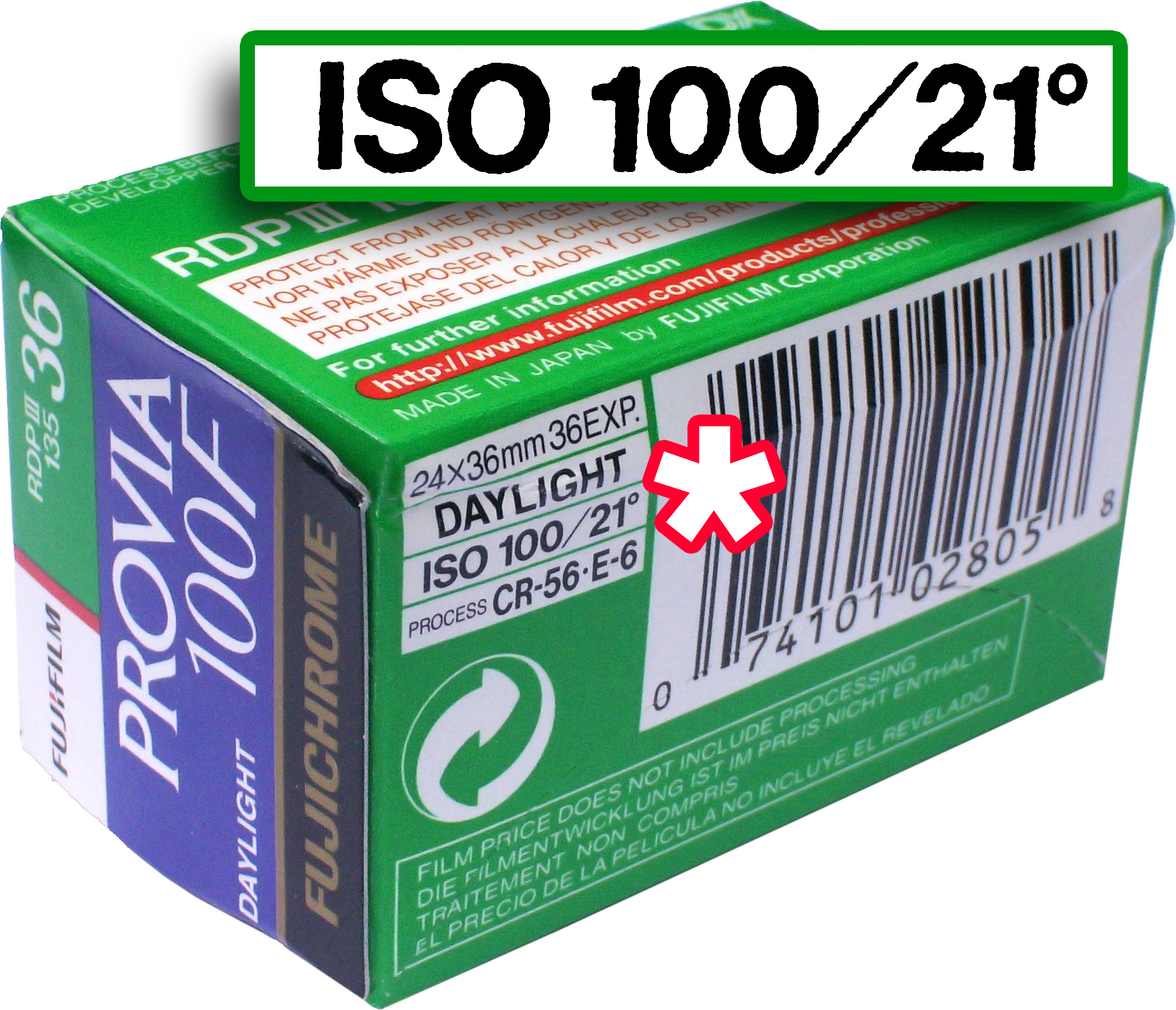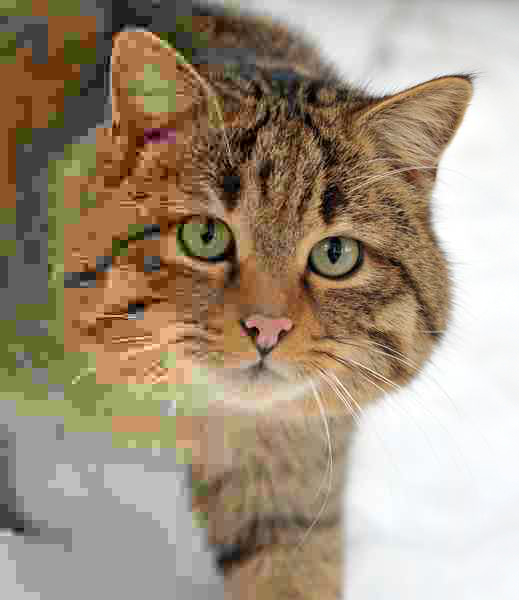|
DIGITAL Q1
The Digital Q1 was a FUJIFILM digital camera model announced in 2003. Its expected street price was listed at around £100. Features The Digital Q1 is a compact 2 megapixel digital camera described as a budget beginners camera. The camera has 3 resolutions, plus a function to record compressed, low-resolution video (AVI format). It can be used as a webcam via the USB port. The DIGITAL Q1 is a low-cost, beginners model – only date and time need to be set. A 16 Mbyte xD card is included. The camera includes a battery-backed clock, allowing time and date to be included in the Exif record, which also includes shutter times. There are menu options to adjust brightness (and other) parameters, with little effect – the firmware aligns to a medium result. * 1/2" CMOS sensor * 4x digital zoom * ISO 100, 200 * Built in flash * Red-eye reduction * Focal length = 46mm on a 35mm camera * 1.5" colour LCD screen * Focus: 120 cm to infinity * Macro focus: approx. 60 to 120 ... [...More Info...] [...Related Items...] OR: [Wikipedia] [Google] [Baidu] |
FUJIFILM
, trading as Fujifilm, or simply Fuji, is a Japanese multinational conglomerate headquartered in Tokyo, Japan, operating in the realms of photography, optics, office and medical electronics, biotechnology, and chemicals. The offerings from the company that started as a manufacturer of photographic films, which it still produces, include: document solutions, medical imaging and diagnostics equipment, cosmetics, pharmaceutical drugs, regenerative medicine, stem cells, biologics manufacturing, magnetic tape data storage, optical films for flat-panel displays, optical devices, photocopiers and printers, digital cameras, color films, color paper, photofinishing and graphic arts equipment and materials. Fujifilm is part of the Sumitomo Mitsui Financial Group financial conglomerate (''keiretsu''). History 20th century Fuji Photo Film Co., Ltd. was established in 1934 as a subsidiary of Daicel with the aim of producing photographic films. Over the following 10 yea ... [...More Info...] [...Related Items...] OR: [Wikipedia] [Google] [Baidu] |
Digital Camera
A digital camera is a camera that captures photographs in digital memory. Most cameras produced today are digital, largely replacing those that capture images on photographic film. Digital cameras are now widely incorporated into mobile devices like smartphones with the same or more capabilities and features of dedicated cameras (which are still available). High-end, high-definition dedicated cameras are still commonly used by professionals and those who desire to take higher-quality photographs. Digital and digital movie cameras share an optical system, typically using a lens with a variable diaphragm to focus light onto an image pickup device. The diaphragm and shutter admit a controlled amount of light to the image, just as with film, but the image pickup device is electronic rather than chemical. However, unlike film cameras, digital cameras can display images on a screen immediately after being recorded, and store and delete images from memory. Many digital cameras can ... [...More Info...] [...Related Items...] OR: [Wikipedia] [Google] [Baidu] |
Fujifilm Digital Q1 Compact Camera 02
, trading as Fujifilm, or simply Fuji, is a Japanese multinational conglomerate headquartered in Tokyo, Japan, operating in the realms of photography, optics, office and medical electronics, biotechnology, and chemicals. The offerings from the company that started as a manufacturer of photographic films, which it still produces, include: document solutions, medical imaging and diagnostics equipment, cosmetics, pharmaceutical drugs, regenerative medicine, stem cells, biologics manufacturing, magnetic tape data storage, optical films for flat-panel displays, optical devices, photocopiers and printers, digital cameras, color films, color paper, photofinishing and graphic arts equipment and materials. Fujifilm is part of the Sumitomo Mitsui Financial Group financial conglomerate (''keiretsu''). History 20th century Fuji Photo Film Co., Ltd. was established in 1934 as a subsidiary of Daicel with the aim of producing photographic films. Over the following 10 years, the c ... [...More Info...] [...Related Items...] OR: [Wikipedia] [Google] [Baidu] |
Megapixel
In digital imaging, a pixel (abbreviated px), pel, or picture element is the smallest addressable element in a raster image, or the smallest point in an all points addressable display device. In most digital display devices, pixels are the smallest element that can be manipulated through software. Each pixel is a sample of an original image; more samples typically provide more accurate representations of the original. The intensity of each pixel is variable. In color imaging systems, a color is typically represented by three or four component intensities such as red, green, and blue, or cyan, magenta, yellow, and black. In some contexts (such as descriptions of camera sensors), ''pixel'' refers to a single scalar element of a multi-component representation (called a ''photosite'' in the camera sensor context, although '' sensel'' is sometimes used), while in yet other contexts (like MRI) it may refer to a set of component intensities for a spatial position. Etymology ... [...More Info...] [...Related Items...] OR: [Wikipedia] [Google] [Baidu] |
Webcam
A webcam is a video camera which is designed to record or stream to a computer or computer network. They are primarily used in videotelephony, livestreaming and social media, and security. Webcams can be built-in computer hardware or peripheral devices, and are commonly connected to a device using USB or wireless protocols. Webcams have been used on the Internet as early as 1993, and the first widespread commercial one became available in 1994. Early webcam usage on the Internet was primarily limited to stationary shots streamed to web sites. In the late 1990s and early 2000s, instant messaging clients added support for webcams, increasing their popularity in video conferencing. Computer manufacturers also started integrating webcams into laptop hardware. In 2020, the COVID-19 pandemic caused a shortage of webcams due to the increased number of people working from home. History Early development (early 1990s) First developed in 1991, a webcam was pointed at the ... [...More Info...] [...Related Items...] OR: [Wikipedia] [Google] [Baidu] |
Megabyte
The megabyte is a multiple of the unit byte for digital information. Its recommended unit symbol is MB. The unit prefix ''mega'' is a multiplier of (106) in the International System of Units (SI). Therefore, one megabyte is one million bytes of information. This definition has been incorporated into the International System of Quantities. In the computer and information technology fields, other definitions have been used that arose for historical reasons of convenience. A common usage has been to designate one megabyte as (220 B), a quantity that conveniently expresses the binary architecture of digital computer memory. The standards bodies have deprecated this usage of the megabyte in favor of a new set of binary prefixes, in which this quantity is designated by the unit mebibyte (MiB). Definitions The unit megabyte is commonly used for 10002 (one million) bytes or 10242 bytes. The interpretation of using base 1024 originated as technical jargon for the byte multiples that ... [...More Info...] [...Related Items...] OR: [Wikipedia] [Google] [Baidu] |
XD Card
The xD-Picture Card is an obsolete form of flash memory card, used in digital cameras made by Olympus and Fujifilm during the 2000s. The xD in the xD-Picture Card stands for eXtreme Digital. xD cards were manufactured with capacities of 16 MB up to 2 GB. The standard was phased out in the late 2000s in favour of the SD card, which had been its primary competitor. History The cards were developed by Olympus and Fujifilm, and introduced into the market in July 2002. Toshiba Corporation and Samsung Electronics manufactured the cards for Olympus and Fujifilm. xD cards were sold under other brands, including Kodak, SanDisk, PNY, and Lexar, but were not branded with the respective companies' logos, except for Kodak. Previously, xD competed primarily with Secure Digital (SD) cards, CompactFlash (CF), and Sony's Memory Stick. Because of its higher cost and limited usage in products other than digital cameras, xD lost ground to SD, which is broadly used by cellular pho ... [...More Info...] [...Related Items...] OR: [Wikipedia] [Google] [Baidu] |
Exif
Exchangeable image file format (officially Exif, according to JEIDA/JEITA/CIPA specifications) is a standard that specifies formats for images, sound, and ancillary tags used by digital cameras (including smartphones), scanners and other systems handling image and sound files recorded by digital cameras. The specification uses the following existing encoding formats with the addition of specific metadata tags: JPEG lossy coding for compressed image files, TIFF Rev. 6.0 ( RGB or YCbCr) for uncompressed image files, and RIFF WAV for audio files (linear PCM or ITU-T G.711 μ-law PCM for uncompressed audio data, and IMA-ADPCM for compressed audio data). It does not support JPEG 2000 or GIF encoded images. This standard consists of the Exif image file specification and the Exif audio file specification. Background Exif is supported by almost all camera manufacturers. The metadata tags defined in the Exif standard cover a broad spectrum: * Camera settings: This includes s ... [...More Info...] [...Related Items...] OR: [Wikipedia] [Google] [Baidu] |
Digital Zoom
Digital zoom is a method of decreasing the precise angle of view of a digital photograph or video image. It is accomplished by cropping an image down to an area with the same aspect ratio as the original, and scaling the image up to the dimensions of the original. The camera's optics are not adjusted. It is accomplished electronically, so no optical resolution is gained. Digital zooming may be enhanced by computationally expensive algorithms which sometimes involves artificial intelligence. In cameras that perform lossy compression, digital zoom is preferred to enlargement in post-processing, as the zooming may be applied before detail is lost to compression. In cameras that save in a lossless format, resizing in post-production yields results equal or superior to digital zoom. Lower-end camera phones use only digital zoom and do not have optical zoom, while many higher-end phones have additional rear cameras, including fixed telephoto lenses that allow for the simulation ... [...More Info...] [...Related Items...] OR: [Wikipedia] [Google] [Baidu] |
Film Speed
Film speed is the measure of a photographic film's sensitivity to light, determined by sensitometry and measured on various numerical scales, the most recent being the ISO system. A closely related ISO system is used to describe the relationship between exposure and output image lightness in digital cameras. Relatively insensitive film, with a correspondingly lower speed index, requires more exposure to light to produce the same image density as a more sensitive film, and is thus commonly termed a ''slow film''. Highly sensitive films are correspondingly termed ''fast films''. In both digital and film photography, the reduction of exposure corresponding to use of higher sensitivities generally leads to reduced image quality (via coarser film grain or higher image noise of other types). In short, the higher the sensitivity, the grainier the image will be. Ultimately sensitivity is limited by the quantum efficiency of the film or sensor. Film speed measurement systems His ... [...More Info...] [...Related Items...] OR: [Wikipedia] [Google] [Baidu] |
JPEG
JPEG ( ) is a commonly used method of lossy compression for digital images, particularly for those images produced by digital photography. The degree of compression can be adjusted, allowing a selectable tradeoff between storage size and image quality. JPEG typically achieves 10:1 compression with little perceptible loss in image quality. Since its introduction in 1992, JPEG has been the most widely used image compression standard in the world, and the most widely used digital image format, with several billion JPEG images produced every day as of 2015. The term "JPEG" is an acronym for the Joint Photographic Experts Group, which created the standard in 1992. JPEG was largely responsible for the proliferation of digital images and digital photos across the Internet, and later social media. JPEG compression is used in a number of image file formats. JPEG/ Exif is the most common image format used by digital cameras and other photographic image capture devices; along with ... [...More Info...] [...Related Items...] OR: [Wikipedia] [Google] [Baidu] |
Audio Video Interleave
Audio Video Interleave (also Audio Video Interleaved and known by its initials and filename extension AVI, usually pronounced ), is a proprietary multimedia container format and Windows standard introduced by Microsoft in November 1992 as part of its Video for Windows software. AVI files can contain both audio and video data in a file container that allows synchronous audio-with-video playback. Like the DVD video format, AVI files support multiple streaming audio and video, although these features are seldom used. Many AVI files use the file format extensions developed by the Matrox OpenDML group in February 1996. These files are supported by Microsoft, and are unofficially called "AVI 2.0". In 2010 the US government's National Archives and Records Administration defined AVI as the official wrapper for preserving digital video. History Publishers faced a predicament regarding how they should distribute videos on CD-ROMs. Thirty seconds of video displayed in 24-bit col ... [...More Info...] [...Related Items...] OR: [Wikipedia] [Google] [Baidu] |

.jpg)





